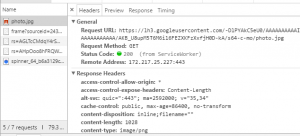Netcat is a utility that’s used for sending and receiving messages over a network connection. Netcat is known as the Swiss Army knife of networking tools, and we’ll be using it to communicate directly with a server.
# sudo yum install nc nmap
[vagrant@localhost]$ nc google.com 80
GET / HTTP/1.1
HTTP/1.1 302 Found
Cache-Control: private
Content-Type: text/html; charset=UTF-8
Location: http://www.google.co.jp/?gfe_rd=cr&ei=vdh5WPnNOK3K8gfgs5d4
Content-Length: 259
Date: Sat, 14 Jan 2017 07:52:29 GMT
302 Moved
302 Moved
The document has moved
here.
[vagrant@localhost ruby3]$ nc example.com 80
HEAD / HTTP/1.1
Host: example.com
HTTP/1.1 200 OK
Content-Encoding: gzip
Accept-Ranges: bytes
Cache-Control: max-age=604800
Content-Type: text/html
Date: Sat, 14 Jan 2017 07:55:51 GMT
Etag: "359670651+gzip"
Expires: Sat, 21 Jan 2017 07:55:51 GMT
Last-Modified: Fri, 09 Aug 2013 23:54:35 GMT
Server: ECS (rhv/818F)
X-Cache: HIT
x-ec-custom-error: 1
Content-Length: 606
[vagrant@localhost ruby3]$ nc example.com 80
OPTIONS / HTTP/1.1
Host: example.com
HTTP/1.1 200 OK
Allow: OPTIONS, GET, HEAD, POST
Cache-Control: max-age=604800
Date: Sat, 14 Jan 2017 07:59:08 GMT
Expires: Sat, 21 Jan 2017 07:59:08 GMT
Server: EOS (lax004/280C)
x-ec-custom-error: 1
Content-Length: 0
HTTP/2 was developed by the IETF’s HTTP Working Group, which maintains the HTTP protocol. It’s made up of a number of HTTP implementers, users, network operators and HTTP experts.
Note that while our mailing list is hosted on the W3C site, this is not a W3C effort. Tim Berners-Lee and the W3C TAG are kept up-to-date with the WG’s progress, however.
A large number of people have contributed to the effort, but the most active participants include engineers from “big” projects like Firefox, Chrome, Twitter, Microsoft’s HTTP stack, Curl and Akamai, as well as a number of HTTP implementers in languages like Python, Ruby and NodeJS.
To learn more about participating in the IETF, see the Tao of the IETF; you can also get a sense of who’s contributing to the specification on Github’s contributor graph, and who’s implementing on our implementation list

